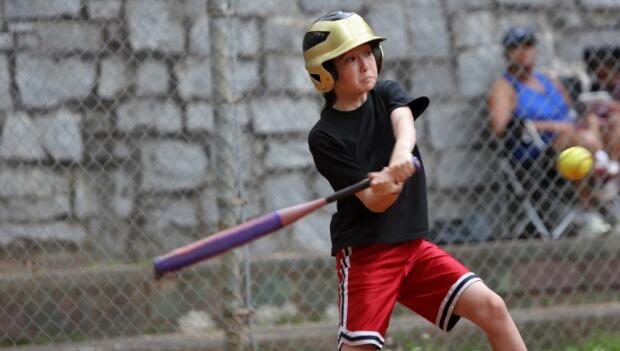6 Softball Hitting Drills
Softball and baseball players both practice in the same way to develop their talents, and hitting is no exception. It’s vital to have a decent combination of softball hitting drills for youth players while focusing on developing strong habits and the foundations of an excellent swing. Excellent drills are good drills most of the time, regardless of whether you are a professional or just beginning at a young age.
Coaches have a habit of repeating the same drills. This is especially true for softball hitting workouts, which may quickly get tedious for the participants. And when players are bored, they don’t get as much out of practice as they would if they were not bored. Diversity is vital not just for inspiration, but also for providing your athletes with a fresh learning stimulus. In order to improve, they must be encouraged. Here are a couple of softball hitting workouts to keep things interesting during your hitting practice.
Two Hand Bat
To strike the ball in a straight path to the other field, accentuating the top hand’s technique is essntial. A feeder sits in a chair about 10 feet away from the plate, behind an L-shaped screen. In front of the screen, a batter stands at the plate, ready to strike. The batter receives the ball from the feeder on the outside of the plate. The batter smacks the ball to the opposing field with emphasis on the top hand. Before a fresh hitter comes in, the hitter takes 10 to 12 swings. Furthermore, go to thebatnerds.com if you’re looking for quality softball bats.
Hitting Fungoes
Hand motion, weight shift, downward swing, and follow-through must all be developed. Players that are waiting on deck hit fungoes to their side of the infield’s fielders. Each of the three hitting stations may hold up to four batters. After a specific number of swings, batters rotate to the rear of the line at another hitting station. One line can rotate to the infield places and the infielders can come in to bat after a complete rotation of the batters through all three hitting stations. With a short, downward swing, focus on striking the top side of the baseball.
See Saw Drill
One of the most critical aspects of hitting is having a steady route to softball. You’ll have a hard time making excellent, consistent contact with the ball if you lower your back shoulder or extend your front arm. The seesaw drill is a drill that can be done anywhere as long as you have a bat, and the more you do it and practice it, the better. This is one of the most basic and crucial motions in the swing. If this section of the swing is incorrect, the remainder of the swing will be incorrect as well. It permits the hitter to be short to the point by building muscle memory in the early action of the swing. To begin, point the knob of the bat in the direction of the catcher’s feet. Then, while taking a brief step, slide the knob of the bat towards the pitcher. That’s all there is to it; it’s short and sweet. While it’s an easy practice to perform, it’s critical for the remainder of the swing. This practice not only reinforces the proper start of a perfect bat path, but it also helps with ball rhythm. You want to feel at ease at the plate, and maintaining a solid rhythm with each pitch throughout your stride and swing can help you do that.
The Bat Path Drill
As we go toward the full swing, it’s critical to apply what we’ve learned in the See Saw Practice to the bat path drill. To begin, we’ll have the batter begin in the launch position, which means the stride has been taken and we’re ready to launch. This is where the See Saw Drill comes into action right away. The knob of the bat should be directed at the catcher’s feet as you stride into launch position, ready to blast at the pitcher. This is a fantastic way to advance through the swing while also including the two previous drills. If you’re training with a softball player, make sure they’ve mastered the prior two drills before moving on to this one. Before bringing all of these actions together in the bat path exercise, you should have a firm foundation and feel for the swing.
Slow to Fast
The slow to fast drill is all about putting a gradual load into a rapid swing (hence the name). Slow and steady motions, in most circumstances, allow the hitter to be explosive to the ball while maintaining control throughout their swing. Start in a regular posture, or whatever the hitter is most comfortable with. Then, while aiming the knob of the bat towards the catcher’s foot, slowly load against the rear leg. Then, while keeping the bat path taught in the last drill, drive off the back side towards the point of contact. Controlling your rhythm is the most critical component of slow to fast practice. Concentrate on reducing the weight and stride length while bursting through the point of contact. This practice is a terrific way to wrap up this collection of drills for young softball players since they’re all basic, but they’re all crucial to become the greatest batter you can be. These workouts are used at all levels since they are the basis for daily improvement as a hitter.
Drop Toss
To improve ball-handling speed. With a partner facing her and the ball held at shoulder height, the batter takes her stance. When it’s time to drop the ball, the batter instructs his partner. The partner lets go of the ball and raises her arm out of the strike zone. The hitter takes a full swing at the plate. The partner can stand on a chair or on the bleachers, which will make the tracking test more difficult. You now have two new softball hitting workouts to add to your practice routine.
Conclusion
To summarize, the softball hitting drills listed above are basic and easy to adapt. You will easily ace it with proper practice and training for the above-mentioned drills.



